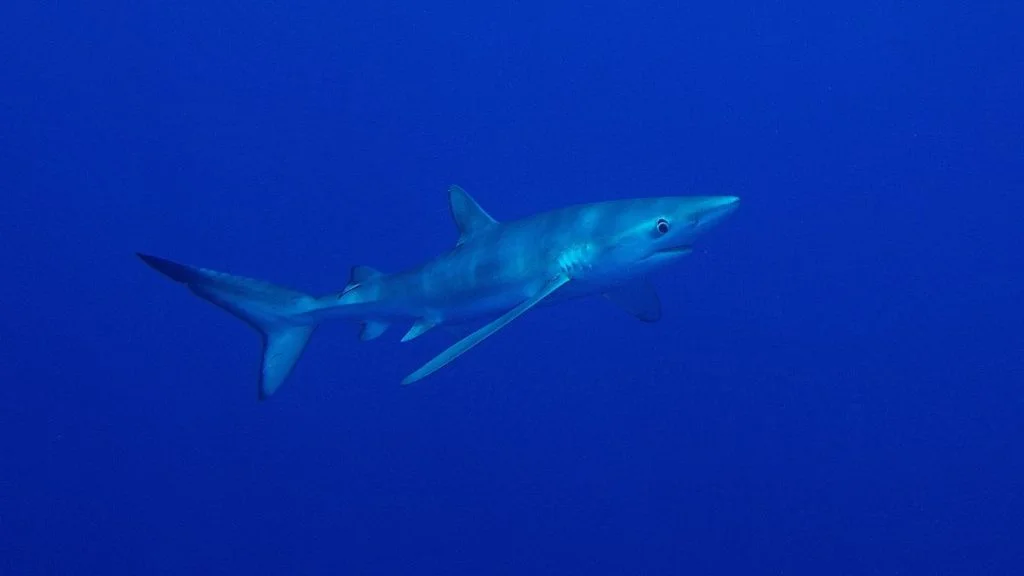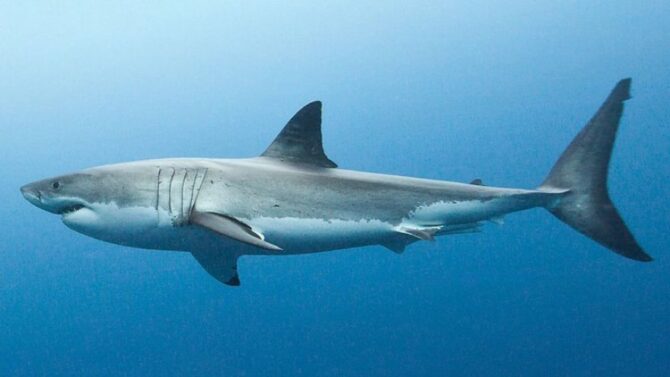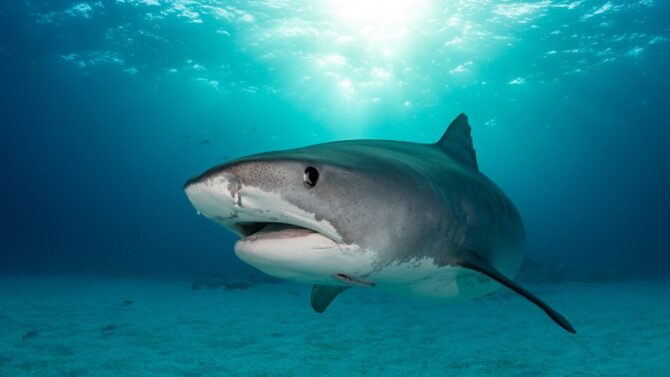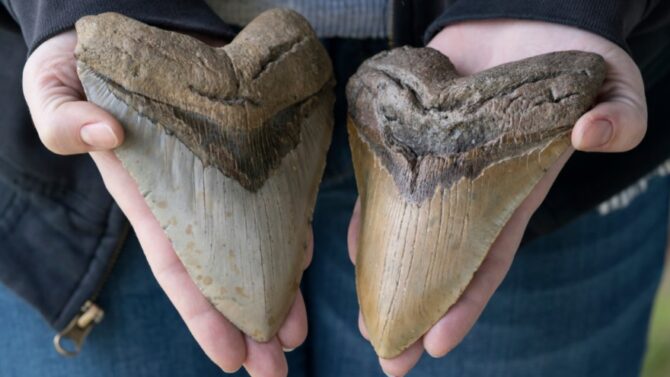Antarctica’s icy region is at the bottom of the globe, a continent that experiences frigid temperatures, long stretches of darkness, and some of the fiercest storms on earth.
The extreme climatic condition of this region often leads to the popular question: Are there sharks in Antarctica?
While the climatic conditions in Antarctica’s icy region are icy, it is home to extremophiles — animals well-adapted to live and thrive in extreme temperatures.
They make up most of the continent’s fauna, as Antarctica is home to 235 different animal species.
Many different fish species can be found in the waters of Antarctica, where they exist and flourish.
Although sharks can swim in cold water, Antarctica is where they draw the line. The water is too cold to support their species.
However, some Shark species can swim in Arctic waters.
This article will provide more detailed information on sharks’ tolerance for icy waters. Let’s dive in.
Are there Sharks in Antarctica?
The answer is no. Sharks are unable to survive in Antarctica currently. They find it difficult to survive in the harsher icy waters of Antarctica, which are constantly near freezing.
The water in Antarctica freezes so quickly that it can cause organisms to become paralyzed.
Shark species that need to move to breathe would struggle to maintain sufficient body energy to remain active in such extreme cold.
Several shark species (those that live on the ocean floor and do not require swimming for breathing) encounter a geographical challenge.
The cold waters surrounding the southern hemisphere would be difficult for these animals to travel because they are often located in shallow waters.
Therefore, there aren’t any sharks in Antarctica currently.
Are there Sharks in Arctic Waters?
Although the Arctic ocean presents several difficulties for sharks, who are typically cold-blooded, there are sharks in the Arctic waters.
However, numerous shark species can hunt in the icy waters of the Arctic, where fatty and nutrient-rich sea life is abundant due to genetic modifications such as endothermy, chemical makeup, and various deep ocean adaptations.
These sharks represent several of the world’s most fascinating variety of shark species in the world.
What Types of Sharks Live in Arctic Waters?
Sharks with endothermic metabolism may survive in extremely cold waters, especially at the North Pole.
Endotherm sharks can elevate their blood temperatures to the same level as or higher than the water’s temperature.
The following list includes most shark species found in the arctic’s frigid oceans.
Blue Shark
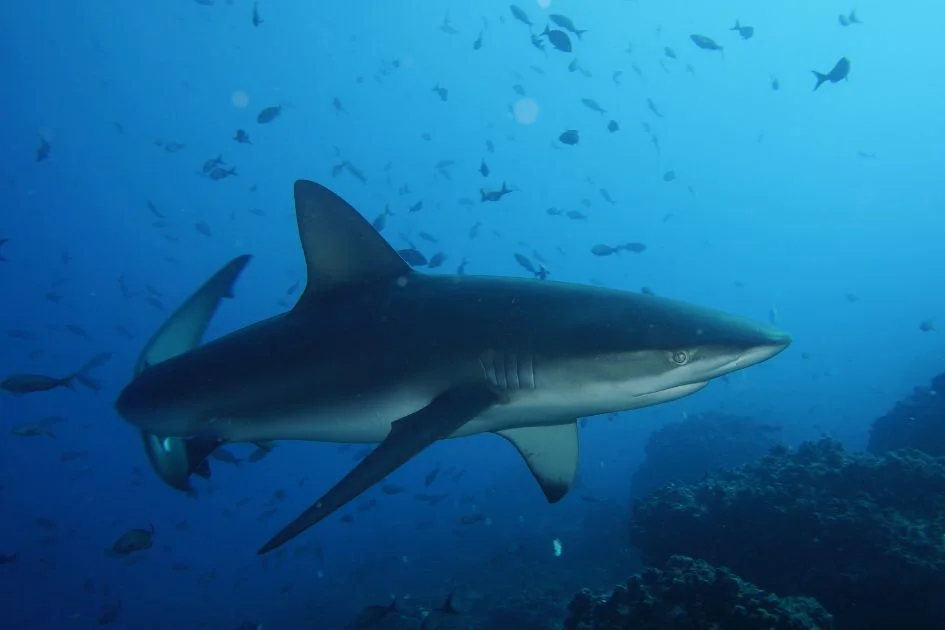
Requiem sharks inhabit almost all ocean environments, of which the Blue Shark is one variety.
Despite traveling slowly, they migrate widely and travel with the ocean currents.
Research shows that blue sharks can migrate 3,740 meters (5,980 miles) annually. In late spring, they migrate through the Arctic to hunt for fatty cold-water fish.
Salmon Shark
Of all shark species, salmon sharks possess the highest endothermic capacity.
Smaller salmon sharks can raise their body temperatures to 140 and 180 degrees Fahrenheit, while the large kinds may do so to 24.5 degrees Fahrenheit.
These creatures are excellent cold water hunters because of their predatory edge from speed and the lack of competition in Arctic waters.
Porbeagle
The porbeagle hunts in Arctic seas up to 4,460 feet deep (1,360 m). It is a quick and lively shark because of its enhanced speed.
One variety of mackerel sharks related to salmon sharks is the porbeagle. Of all the different shark species, they have the second-highest endothermic capability.
Greenland Shark
The Greenland shark is the most noticeable in the arctic waters. The unique characteristic of Greenland sharks is that they are cold-blooded, unlike their other Arctic relatives.
They rely on a high quantity of urea and Trimethylamine N-oxide (TMAO) in their bodies to protect proteins against freezing, rather than generating internal heat.
Greenland sharks can hunt at great depths of 7,220 feet without suffering the effects of atmospheric pressure, thanks to their chemical makeup.
Basking Shark
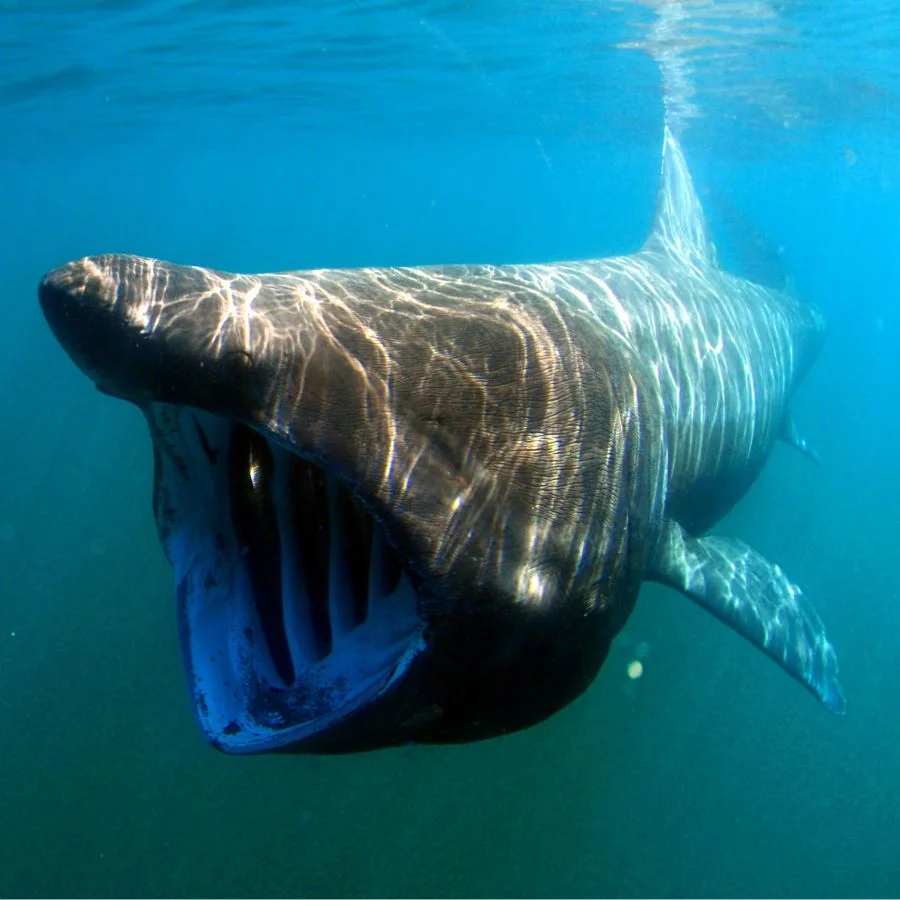
The Basking shark is a giant filter-feeding shark that travels through the ocean at a slow speed while sifting zooplankton through its minuscule teeth.
This species is an endothermic mackerel shark, similar to the salmon shark.
This massive filter-feeder travels through the ocean slowly while sifting zooplankton through its minuscule teeth.
Pacific Sleeper Shark
Unlike the Greenland shark, the Pacific sleeper shark is non-endothermic and uses its urea and TMAO to prevent freezing.
Their livers are devoid of squalene, which can freeze in the icy waters of the Arctic. They can attack prey even if they only move at 1.7 mph (2.7 kph).
Pacific sleeper sharks have developed huge stomachs to carry a lot of food because food is rare in deep seas, leading to very odd feeding habits.
Bluntnose Sixgill Shark
The bluntnose sixgill shark has six-gill slits, which is unusual among sharks.
As a result of their adaptation to deep water hunting, where the low Arctic temperatures have less of an effect on their biology, they can swim in the Southern parts of the Arctic.
Spiny Dogfish
Of all shark species, the spiny dogfish is the most prevalent. They are small shark species, only reaching lengths of 2.6–3.3 ft (80–100 cm).
The spiny dogfish is a non-endothermic shark but prefers cooler, more temperate waters.
It migrates north into Arctic waters during the warmer months to feed on nutrient-rich food.
Can Sharks Survive in Cold Water?
Temperatures as chilly as 36 degrees Fahrenheit is not a problem for some shark species. This is easy for them because they are endothermic, warm-blooded creatures.
Because of this, they can endure cold climates as long as the temperature doesn’t dip below zero by raising their body heat and generating heat internally.
Despite having endothermic abilities, most sharks enjoy the comfort of warm waters, and many even relocate to tropical areas in the winter.
Can Sharks Survive in Frigid Water?
Sharks can withstand the cold. Nevertheless, it varies depending on the species and their preferred temperature.
Whale sharks are among the species that prefer swimming in warmer waters, while the Pacific and Greenland sleeper sharks like swimming in colder seas.
As the seasons change, some shark species may be able to adjust to the fluctuating temperature levels, while others may move to warmer conditions.
Shark Habitat – Where Do Most Sharks Live?
Several shark species can survive in freshwater rivers and lakes, but this is rare. Most sharks spend their entire lives in the first 2,000 meters of water.
Although it is uncommon, sharks have been observed thriving 3,000-plus meters beneath sea level.
Although we can encounter most shark species up to 2,000 meters below water level, the great white shark favors the open water.
This preference is primarily because of the available food source and the temperature levels witnessed at those deeper parts.
The majority of sharks favor shallow continental shelf areas to call home.
Statistically, 97% of the world’s available water resources are stored in the oceans.
Nevertheless, the characteristics of different places differ (geographic features, distance from the land, altitude, temperatures, etc.).
As a result, certain regions have a high concentration of aquatic flora and fauna while others do not.
Sharks seem to choose the shallower coastline regions because rivers discharge nutrients into the oceans at these locations.
Does Shark Habitats Change?
Some species of shark generally live in relatively small habitats. Examples include the blacktip and tiger sharks that may make brief migrations (up to 1000 miles).
The mako and blue shark are two examples of highly migratory creatures. Most often, relocation is done for feeding and nesting objectives.
Because they must travel such vast distances, these aquatic animals need unique adaptations to cope with the variations in geography, climate, and diet.
Are There Sharks in the Great Lakes?
The Great Lakes are not home to sharks, yet so many species are attracted to this water body because it is their native environment.
Sharks don’t display territorial behavior like other fish traveling through waterways from tropical, polar, and temperate climates.
Sharks are an exception to the rule since they require saline or brackish environments, whereas most aquatic organisms are at home in freshwater.
Sharks can’t exist in other waters that aren’t saline or brackish because freshwater can break down their tissues, induce inflammation, and eventually cause them to die.
However, research has shown that only the bull shark can thrive in freshwater on a limited basis.
Sharks rely on the lipid-rich liver in their natural habitat to efficiently improve stability. This assistance is typically flawless due to the physical characteristics of the saline or brackish water.
However, because of the physical characteristics of freshwater bodies, which already establish buoyancy at a higher negative value, the liver cannot effectively give the same buoyancy assistance.
The simple reason is that freshwater bodies have densities that are generally lower than those of saltwater.
Are there Great White Sharks in Antarctica?
Great white sharks like temperate, brackish, and subtropical coastal seas, yet they travel across oceans.
They are endotherms, which means they generate their heat through muscular contractions and can be found in chilly seas because they are not cold-blooded.
However, this means they need more food. The best conditions are warm coastal waters with enough food.
This indicates that they find the icy seas of Antarctica to be unappealing and unsuitable for them, at least for the moment.
Great white sharks will likely locate a new hunting territory soon if the region thaws and the water currents fluctuate.
Are There Sharks in Alaska waters?
Three shark species are frequently encountered in the Alaskan seas: salmon sharks, spiny dogfish, and Pacific sleeper sharks.
Several other species, such as great white sharks, blue sharks, six-gill sharks, etc., also periodically appear in Alaskan waters.
Wrap Up
Even though Antarctica is seen as an icy wasteland, it surprisingly boasts of a large number of amazing animals.
There are no surface dwellers in Antarctica except insects and microorganisms. Animals need to possess a means of insulation before they can survive in Antarctica.
There are no sharks in Antarctica for now. However, global warming could thaw the ice a little, making the water temperature bearable for sharks.
A special group of sharks with endothermic abilities can swim in temperatures slightly above zero.
You May Also Like:
Featured Image Credit: Vpommeyrol / Getty Images
